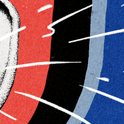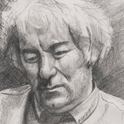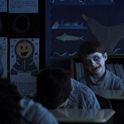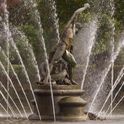The art history of the early 20th century is usually written as the story of a breakthrough for painters and sculptors, who, operating on their own or in small groups, pursued new strategies in colour and form. There were Matisse's expanses of uninflected hues, Picasso's primitive masks and rough planes, Brancusi's marble orbs and brass ellipses, Kandinsky's music of colours. Yet, as "The American Scene," the British Museum's absorbing exhibition of American prints from the first half of the last century, shows, the 20th century was also a golden age—and a revolutionary one—for the medium of the artist's print: for etchings, lithographs, woodcuts, screenprints and the rest.
Prints are a medium that have slipped down the aesthetic gully between modern art and photography, both forms for which we have national museums. And one leaves the British Museum's exhibition—which contains only 147 prints from its collection of hundreds of thousands—longing for some lottery cash for a national print museum. The exhibition ends on 7th September, but will be touring to Nottingham, Brighton and Manchester in 2009—catch it where you can.
On display are the prints of not only legendary artists like abstract expressionist Jackson Pollock, the playful cubist Stuart Davis and feminist surrealist Louise Bourgeois, but also a long list of little-known but instantly impressive print-makers. A large proportion of these—like the "Ashcan school," which included John Sloan and George Bellows—earned their living as commercial illustrators on newspapers and magazines. In the 1910s and 1920s, this school produced memorable prints which crossed over from illustration to fine art. The subjects were drawn from everyday urban life—slum-dwellers sleeping on the roofs of Manhattan on humid summer nights, an underground prize fight, a convict in the electric chair.
The great depression did not stop this stream of punchy, socially conscious images. Under the Federal Arts Project (FAP), part of Roosevelt's New Deal, artists were paid around $24 a month to produce small editions of prints that were distributed to schools, hospitals, libraries and prisons. Among the curiosities on show at "The American Scene" is Stacking Hay (1935-36), an early FAP-funded print by Pollock in the style of the regionalist movement, which championed romanticised images of rural America.
The British Museum exhibition also demonstrates that the photograph was not the only medium in which iconic images of 20th-century American history were made. There is no more powerful picture of America at war than the Philadelphia lithographer Benton Spruance's Riders of the Apocalypse (1943), a cubist image of a sky full of bombers, illuminated by searchlights, in which the decals of the planes, wings, beams of light and engine grilles form a space that is dense, undulating, fragmented and vast.

This is an American exhibition, and it reflects a distinctly American take on modernism that often has a charming innocence. The European modernists developed styles like cubism or expressionism and then applied them to a range of classic genres. The Americans took these "isms" and looked around for subjects that fitted the style. Polish emigré Joseph Vogel saw Picasso's Guernica in New York in 1939 and promptly adapted the technique to an American football game. In his Football (c. 1938-41), player number 57 is about to throw a ball; his limbs, and those of other intercepting players, splay like those of the victims of the German bombing.
But American print-making was about more than reapplying European modernist styles. Print-makers' medium did not permit the variety of colours and brushstrokes avant-garde painters were exploring, so they evolved a poetry of texture and surface. This aesthetic crossed into other areas of international art after the 1950s. It is difficult to imagine Richard Serra's huge sheets of rusting steel or Robert Morris's hanging sheets of felt without these prints. Regardless of their content, they draw you in with their mechanically produced textures—the inky blacks of lithography, the grain of woodcuts, the sumptuous surfaces of techniques like wax-printing.
There's also a taste for the concrete in the prints of the "precisionists," like Charles Sheeler and Louis Lozowick, who described skyscrapers, factory pipes and grain silos in the style of technical drawings. Here was a love of urban and industrial shapes, unadulterated by any trendy artistic style, which would be brought directly into the gallery a few decades later by the minimalists, conceptualists and pop artists. This perhaps explains why the artist now considered the greatest of the second half of the 20th century was an American print-maker: Andy Warhol.











